Bitcoin's 9th Birthday, Then Where To Go?
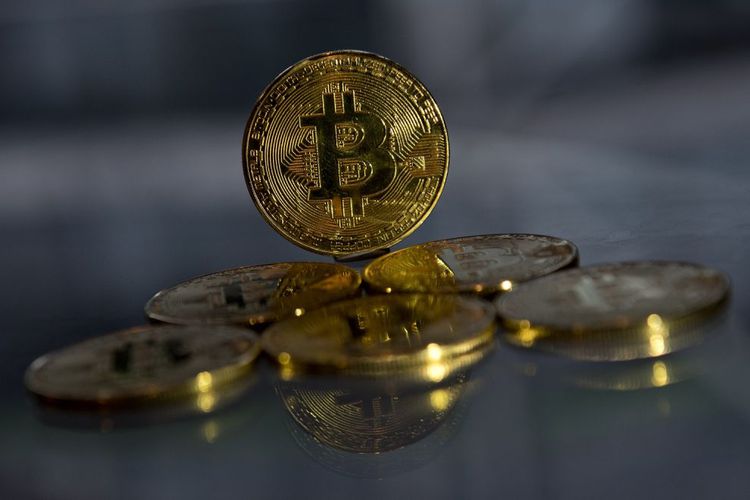
TODAY nine years ago, January 3, 2009, bitcoin started trading. He stole the world's attention.
The development is fantastic and aggressive, make dag dig dug investors. However, to this day there are still many questions to accompany this bubble virtual currency.
It is said that in 2009, Satoshi Nakamotowho claimed to be the creator of Btc (bitcoin) sent a number of Btc to his colleague. This "transfer" is accompanied by "The Times 03 Jan 2009 Chancellor on brink of second bailout for banks".
They mark the commencement of transactions with Btc virtual currency around the world in a Blockchain Bitcoin system aka Genesis Block.
Long before that happened, Satoshi, who until now has not known which person, formulated Btc in such a way. As a result, the development of Btc is experiencing ups and downs.
At that time, there were concerns of his creators about the response of the world financial community to Btc. Therefore, today's most popular virtual currencies are 'live' underground through its exclusive community
Now, Btc has stolen the attention of the world's financial community and even the state's authority to discuss it as an international issue. Btc then became the new 'toy' investment world of the moneyed-for-hungry new products gain profit doubled.
The bitcoin wallet owner account has grown rapidly in recent years. Last data mentioned, there are 21.4 million bitcoin wallet at the end of 2017.
Of that number, several hundred thousand of them are owned by members registered in Bitcoin.co.id. To date, there are more than a hundred Crypto Exchanges in more than 50 countries.
That's just the number of accounts.
If we look at how the Btc value moves, we will be even more shocked. Any phenomenon behind the movement of Btc values, of course it managed to provoke various reactions from around the world.
In early 2010, Btc's value was less than a US cent and then 200 dollars in early 2015, then to 900 dollars at the beginning of 2017. Throughout 2017, Btc had booked an increase of more than 1,800 percent.
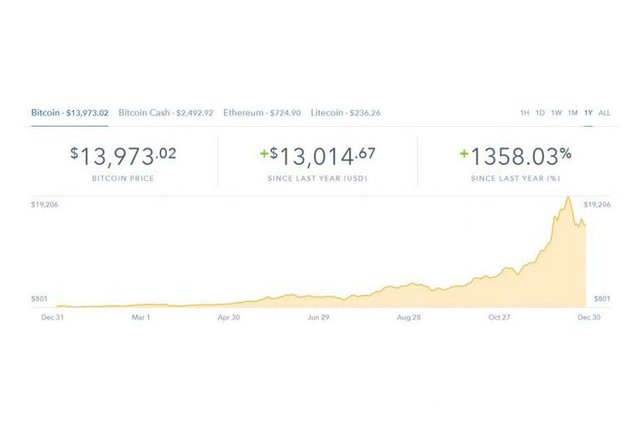
And, apparently 2017 is the golden age of Btc in terms of public attention. Corporate accounts begin coloring Btc asset holders. Investment banking and hedge funds from around the world are starting to invest some of their assets into bitcoins and other crypto currency products.
The American public has been able to buy the bitcoin Futures contract on the CBOE (Chicago Board Options Exchange) and the CME Group (Chicago Mercantile Exchange & Chicago Board of Trade). The move was read publicly as a form of American government support for Btc.
Btc's glory continues. An increase in investment value of up to 1,400 percent caused Btc to be compared with the value of world stock investment. The following is a description of investment performance of Btc and the leading stock exchange.
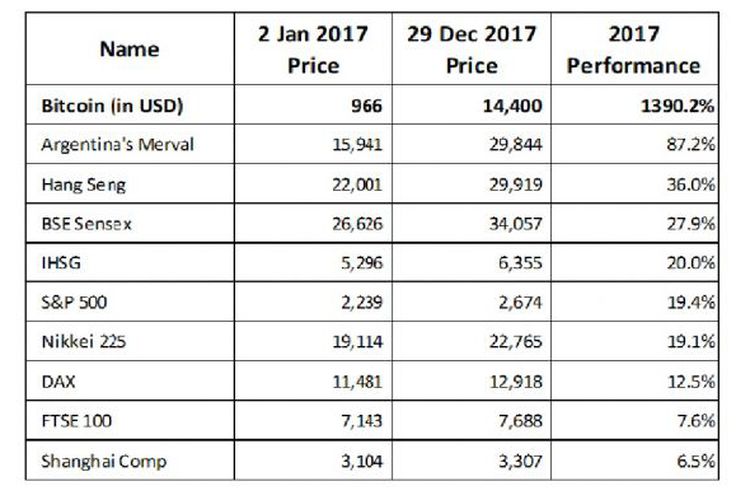
On its ninth anniversary, today, Btc unit prices are still mighty perched on the price of 14,000 US dollars. That is, with the number of Btc in circulation at this time, which is about 16.77 million Btc, valuation reached about 230 billion US dollars.
If we are fraudulently comparing with our APBN value, the valuation is equal to 1.35 times the value of APBN 2018 or about 45 percent of the overall market value of stocks in the JCI.
Bitcoin where to go?
Satoshi deserves to be proud of this bitcoin achievement for nine years. The question is, where are bitcoins going?
Btc's fantastic glory was accompanied by many questions, both from the common people and the investors. Btc euphoria is overshadowed by dark clouds coming from a number of facts.
In addition to its open source technology-which is vulnerable to hacking-practice, for example, who is responsible for Btc's performance? Then, will Btc and other virtual money be accepted into a legitimate exchange tool? How is the future of Btc? There are still a few more questions.
All fears are natural.
First, no institution has the authority and responsibility for the continuity and failure of bitcoin. This fact has caused many central banks and governments to have difficulty regulating and regulating bitcoin policies in their respective territories.
Some countries even take extreme steps in protecting their economies, including preventing the flight of their funds to other more dominant countries and having more bitcoin reserves. For example, by prohibiting the transaction of fiat currency deposits to Crypto Exchanges, while still allowing its trading transactions to take place.
A country with foreign exchange reserves generally takes a bolder step by allocating a portion of its foreign exchange reserves to bitcoins.
In fact, some are openly supporting and funding various activities to explore and exploit the economic potential that can be generated from other bitcoins and Crypto Currencies. They really make this an investment opportunity, with the hope that in the future they can increase their foreign exchange reserves
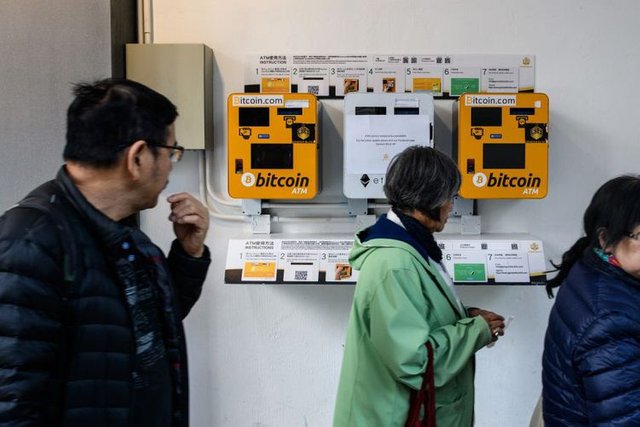
Some countries that have already massively adopted bitcoinnya, began to take a step further in anticipating the negative impact. Among other things is to consider developing their own Crypto Currency, which is managed by the central bank in their country.
Different again with a country that was experiencing economic crisis, or reserves are limited. In the midst of their own internal affairs, rather than experiencing confusion they tend to just let go, and seem powerless to manage the activity of their dark investors looking for bitcoin.
Countries that have the largest bitcoin reserves expect big on the phenomenon of Btc transactions every day. At least will enter tens of billion US dollars to the country's economic system.
Of course, consciously these countries will maintain the conductivity of bitcoin, campaigning bitcoin to all corners of the world in order to perpetuate the continuity of this global "business" digital scale.
From this it is seen, there is no uniformity in these countries in the management of bitcoin in their country.
Second, the technology used in the bitcoin system, or commonly known as Blockchain still continues to undergo development although it has been developed since 2008.
Although it is open source, which means it can be accessed by the public, this technology is still mash complicated and difficult to understand by many information technology practitioners everywhere.
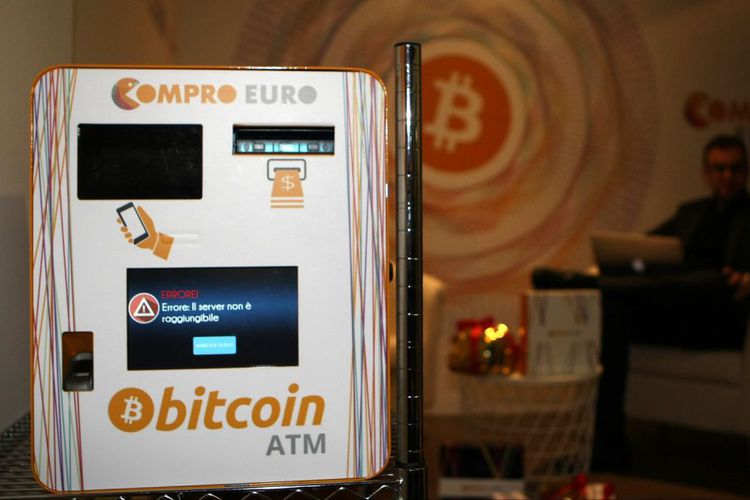
During 2017, several hard forks took place, such as improvements and updates to the Blockchain system, which aimed to improve capabilities and make improvements to the technology itself.
Blockchain's Distributed Ledger technology, cryptography techniques used to secure the system, the concept of bitcoin mining and rewards in it, its sophisticated recording and verification mechanisms, as well as the unique and complex unique methods developed by Satoshi are truly technology packages that system architecture and how it works easily confuses the common people.
Later, the complexity and complexity of Btc systems often become a magical language that is often echoed by many mainstream media, including the potential that this technology can apply. However, it seems that Blockchain industry players prefer to be lulled to enjoy the savory profit from bitcoin investments rather than sweat with the complexity and application of Blockchain technology that is still not applicable.
Massive coverage in some of the world's major mass media, especially with the furor of bitcoin rises in recent months, has automatically boosted the popularity of bitcoins and succeeded in sucking many investors into bitcoin hunting.
Is it then that the increasingly massive population of bitcoin users and investors will become the mainstream for governments in many countries to immediately recognize and accept it as a means of payment?
Third, the general public has not received the use of virtual money. People need time to understand how to acquire, store, secure, and use bitcoins.
The same is true with the governments of each country. Authority still has not found a way to monitor and control the movement of this digital money. Btc owner accounts can easily and quickly move their virtual treasures among themselves without anyone-whether it's a bank or another institution-so its existence is not easily traced.
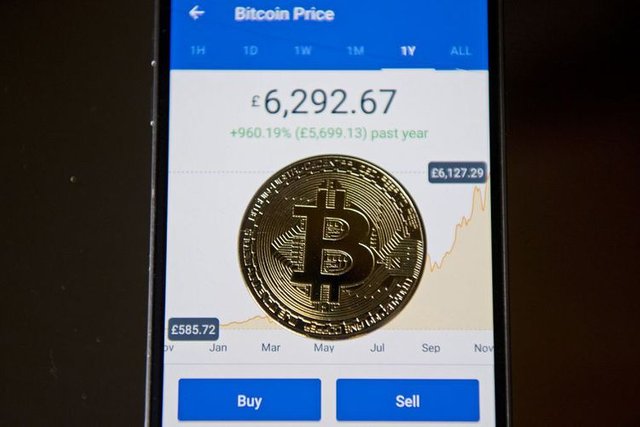
Such financial models are particularly vulnerable to financing terrorist activities, money laundry, fundraising for illicit activities, drug offenses, or other illegal transactions.
Fourth, the concept of bitcoin as a currency is so complicated and complex that it causes difficulties for many of the general public to understand it, to understand the character and how it works. The most important is the concept and mechanism of making bitcoin. The explanation of how the Bitcoin Blockchain system creates new bitcoin money, often known as mining, is enough to make a headache for most people. Overall, bitcoins will only amount to 21 million. To this day, the new bitcoin mining process generates about 16.77 million bitcoins, and its estimated full population will be achieved by 2140. Then, how the system stores and manages all bitcoin transactions, both from transactions generating and transactions of sending and receiving bitcoin, making many people have trouble imagining exactly the method and how it works.
The fifth, the last one which is no less confusing is the concept of the value contained in one bitcoin. The value of the fiat currency is generally influenced by gold reserves or other factors such as the stability of a country, the confidence in the currency, and the volume of trade involving the currency.
Another case with bitcoin. Originally, its creation wanted to avoid the influence of supply and demand. However, in its development actually depends on supply and demand. This has an impact on the volatility of the value of the bitcoin itself.
The behavior of value movements and the volatility of bitcoin up and down like a roller-coaster tub, as it reminds us how bitcoin is then treated like any other investment commodity. Bitcoin is seen no longer treated as a currency whose value is relatively more stable so it can be used as a means of payment and can be used as savings.
In many countries, despite the many merchants who receive payments with bitcoins, it appears that their transaction volume is still very minimal.
This is easy to understand because the owners of bitcoin certainly not kepengin exchange their existing bitcoin with a cup of coffee or a pizza, because in the next few months their bitcoin will promise tremendous benefits.
However, it seems that the confusion will not discourage investors. Although the price has been assessed many observers experience bubble, bitcoin still interesting in the eyes of investors who like dark eyes hunting. Could this be a form of optimism investors welcome the new year?
On the 9th anniversary of this bitcoin, if only we had the opportunity to ask Satoshi, he might have confused himself with the direction and future of bitcoin that he originally created to become new money, digital money that could also be used as a means of payment.
So,Mister Satoshi, where will be taken bitcoin?

Source: http://ekonomi.kompas.com/read/2018/01/03/091100626/bitcoin-ulang-tahun-ke-9-lantas-hendak-ke-mana-